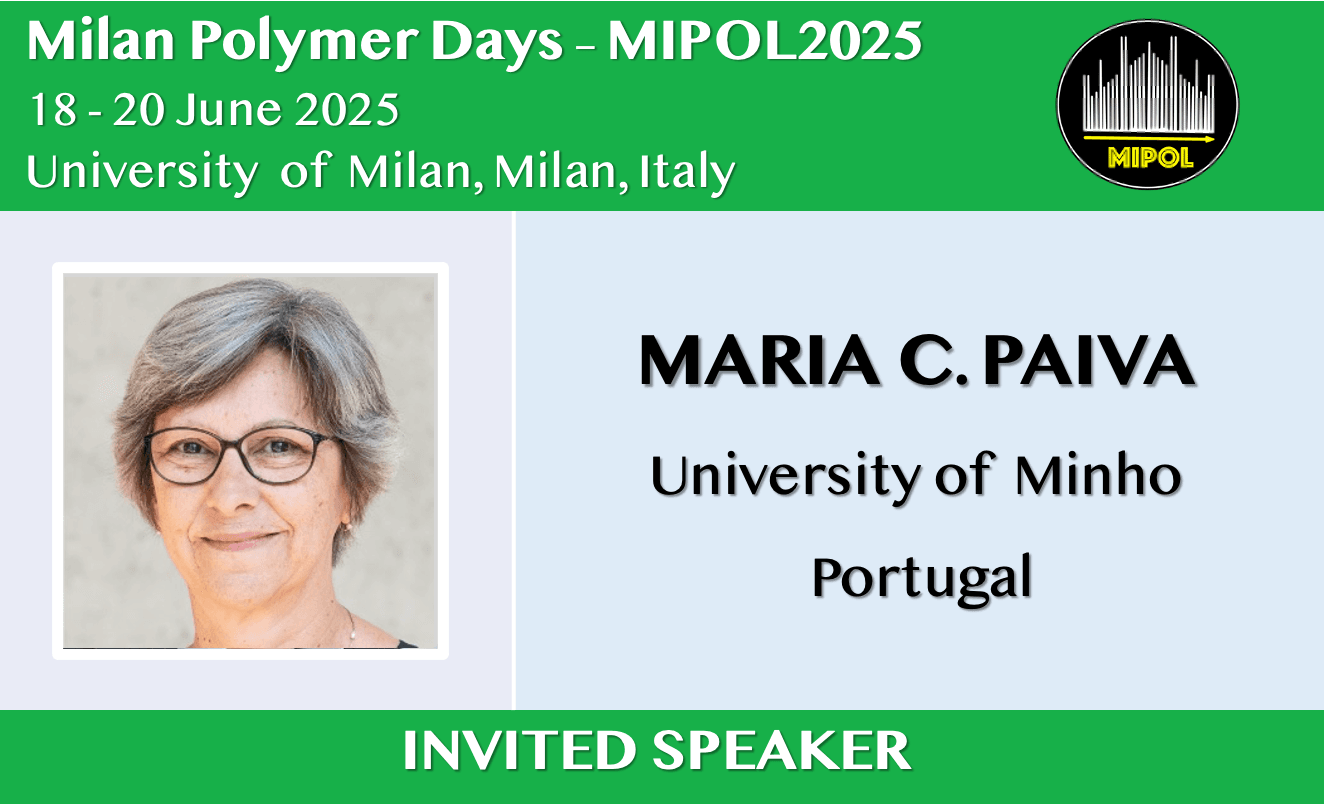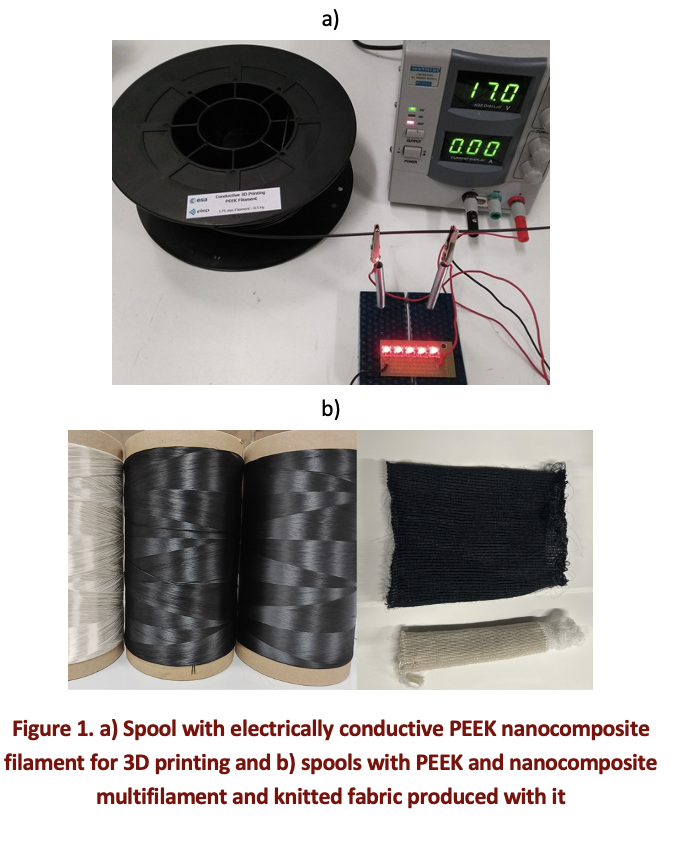PEEK composites with carbon nanoparticles: processing, properties and functionalities
Abstract

The increasing interest in high-performance engineering thermoplastics is driven by their ability to offer lightweight and excellent mechanical performance in a wide temperature range. Polyether ether ketone (PEEK) is in this group of polymers, finding application as matrix material for reinforced polymers. Its performance can be enhanced by producing nanocomposites such as those based on carbon nanomaterials, increasing the mechanical performance and fostering additional properties such as electrical conductivity and enhanced thermal dissipation [1, 2]. Electrically conductive high-performance polymer composites are interesting for applications that require, for example, electrostatic dissipation, electromagnetic interference (EMI) shielding, or lightning strike protection. The combination of high electrical conductivity, mechanical performance and service temperature is particularly relevant for space applications. These requirements are investigated via the preparation of polymer nanocomposites containing suitable fillers. Carbon nanotubes (CNT) and graphite nanoplatelets (GnP) present excellent mechanical properties and high electrical conductivity. The present work reports the manufacture of PEEK/CNT/GnP composites by melt mixing using twin screw extrusion. Challenges include attaining the required nanoparticle dispersion to achieve a conductive network, overcoming the cohesion of the original particle agglomerates, and obtain good mechanical performance. The composites were optimized aiming at two different types of products: i) forming a continuous, calibrated monofilament for use in additive manufacturing [3] and ii) producing multifilament for textile applications. The compositions, mixing methods and processing conditions that yielded the higher electrical conductivity were studied. Then, filaments were obtained by twin screw extrusion, were chopped into pellets, and used to produce i) monofilament with 1.75 mm diameter and electrical conductivity of 10 S/m, by twin screw extrusion (Figure 1), and ii) multifilament, by melt spinning. Test parts were printed by Fusion Deposition Modelling (FDM) using the monofilament produced, and the textile filaments were weaved using textile techniques. The materials and parts produced were characterized fin terms of morphology, electrical conductivity and mechanical properties.

References
- X. Zhang J. Compos. Mater. 2021, 55, 2115.
- J. A. King, J. M. Tomasi, D. R. Klimek-McDonald, I. Miskioglu, G. M. Odegard, T. R. King, J. W. Sutherland Polym. Compos. 2018, 39, E807.
- J. Gonçalves, P. Lima, B. Krause, P. Pötschke, U. Lafont, J.R. Gomes, C.S. Abreu, M.C. Paiva, J.A. Covas Polymers 2018, 10, 925.
Acknowledgments
The authors acknowledge financial support from ESA under Contract Nr. 4000116010/15/NL/FE, and the National Funds through the FCT–Portuguese Foundation for Science and Technology, Reference UID/CTM/50025.